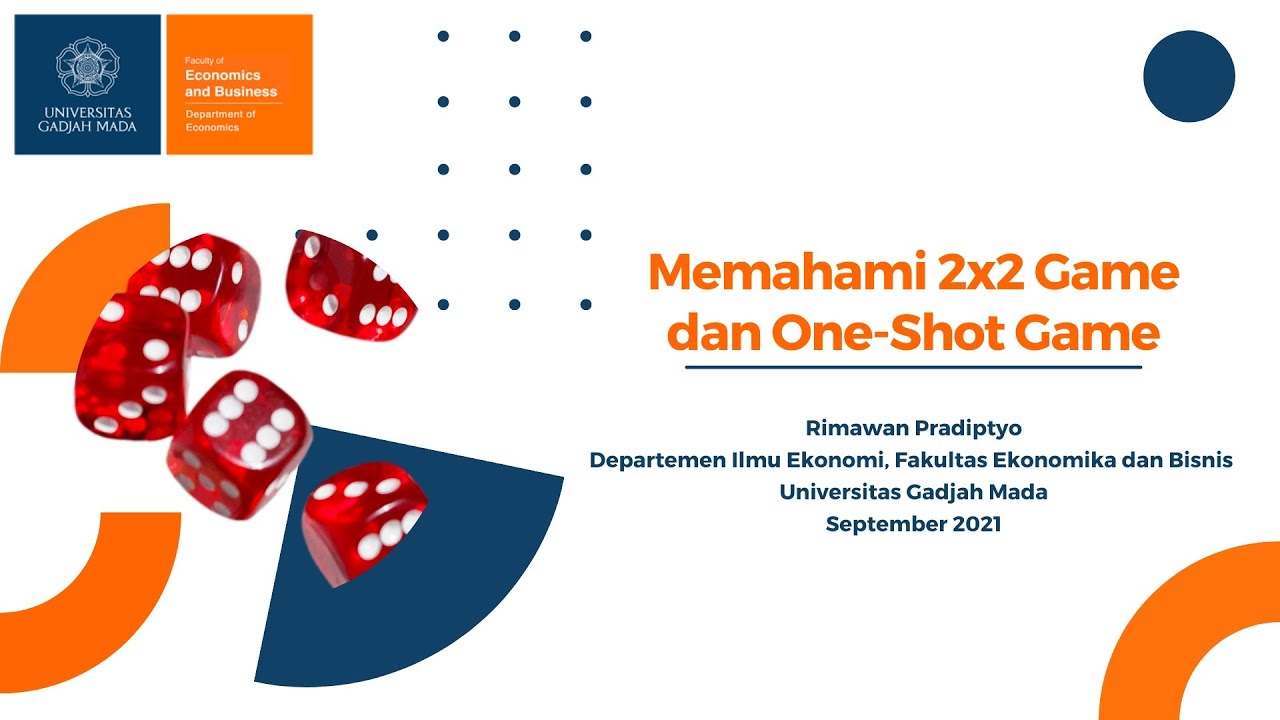Zero-Sum Games Vs. Non Zero-Sum Games || Game Theory Series
Summary
TLDRIn this introductory video on game theory, the presenter explains zero-sum and non-zero-sum games. Zero-sum games, such as 'matching pennies,' highlight scenarios where one player’s gain is another’s loss. In contrast, non-zero-sum games allow for mutual benefit, exemplified by two companies competing for new customers without taking from each other. The presenter also hints at future videos discussing more complex non-zero-sum game examples. The video concludes with a mention of Zachary Taylor, the 12th President of the United States, and a call to action for viewer support.
Takeaways
- 😀 Zero-sum games involve situations where one person's gain is another person's loss.
- 😀 In a zero-sum game, there are no opportunities for mutual benefit.
- 😀 Examples of zero-sum games include most competitive sports and the game of matching pennies.
- 😀 In matching pennies, players choose heads or tails; the outcome determines who wins or loses the penny.
- 😀 Non-zero-sum games allow for scenarios where both players can win or benefit.
- 😀 An example of a non-zero-sum game is when companies try to attract new customers without taking them from each other.
- 😀 Increasing marketing efforts can lead to new customers for both competing companies in a non-zero-sum situation.
- 😀 Game theory provides insights into strategic interactions, highlighting the difference between competitive and collaborative scenarios.
- 😀 Future videos will explore more complex examples of non-zero-sum games.
- 😀 The creator encourages viewer engagement through comments and support via platforms like Patreon.
Q & A
What is a zero-sum game?
-A zero-sum game is a situation where one person's gain is exactly balanced by another person's loss. In this type of game, the total payoff remains constant, meaning that the victory of one player necessarily results in the defeat of another.
Can you provide an example of a zero-sum game?
-The game of matching pennies is a classic example. In this game, two players simultaneously choose heads or tails. If they choose the same side, one player wins the penny; if they choose differently, the other player wins.
What distinguishes a non-zero-sum game from a zero-sum game?
-In a non-zero-sum game, one player can benefit without the other having to lose. This means that both players can achieve gains simultaneously, leading to outcomes that are mutually beneficial.
How does the speaker illustrate a non-zero-sum game?
-The speaker uses the example of two competing companies. If one company increases its marketing to attract new customers rather than just competing for the same customers as the other company, both can gain without causing a loss to each other.
What are some typical scenarios where zero-sum games occur?
-Zero-sum games typically occur in competitive situations, such as certain sports, gambling, and strategic games where the interests of the players are completely opposed.
What is the significance of game theory in understanding competitive behavior?
-Game theory provides a framework for analyzing situations where individuals or groups make decisions that affect each other's outcomes, helping to understand strategic interactions and optimize decision-making.
What are some examples of non-zero-sum games?
-Examples of non-zero-sum games include trade negotiations, collaborative projects, and any situation where cooperation can lead to mutual benefits, such as environmental agreements.
What is the role of comments and interactions in supporting the speaker's efforts?
-The speaker encourages viewers to comment, share, and engage with the content, as these interactions help promote the video and provide feedback, which can be valuable for future content creation.
Who was Zachary Taylor, and why is he mentioned in the video?
-Zachary Taylor was the 12th President of the United States, serving from March 4, 1849, until his death on July 9, 1850. He is mentioned as bonus content, providing viewers with a brief historical insight.
What does the speaker hope viewers take away from this video?
-The speaker hopes viewers learn about the differences between zero-sum and non-zero-sum games, understand their implications, and gain insights into strategic interactions, while also encouraging feedback and interaction.
Outlines

This section is available to paid users only. Please upgrade to access this part.
Upgrade NowMindmap

This section is available to paid users only. Please upgrade to access this part.
Upgrade NowKeywords

This section is available to paid users only. Please upgrade to access this part.
Upgrade NowHighlights

This section is available to paid users only. Please upgrade to access this part.
Upgrade NowTranscripts

This section is available to paid users only. Please upgrade to access this part.
Upgrade NowBrowse More Related Video

How to Win with Game Theory & Defeat Smart Opponents | Kevin Zollman | Big Think

Guide to Game Theory - zero-sum games

Menjawab Zero sum Game Bitcoin dengan Matematika model secara Akurat!

Episode #2: Memahami 2x2 Game dan One Shot Game

IF LIFE IS ABOUT WINNING AND LOSING, THINK AGAIN!! MATHEMATICS DOESN'T NECESSARILY TEACH YOU THAT!!

Game Theory in Operation Research
5.0 / 5 (0 votes)